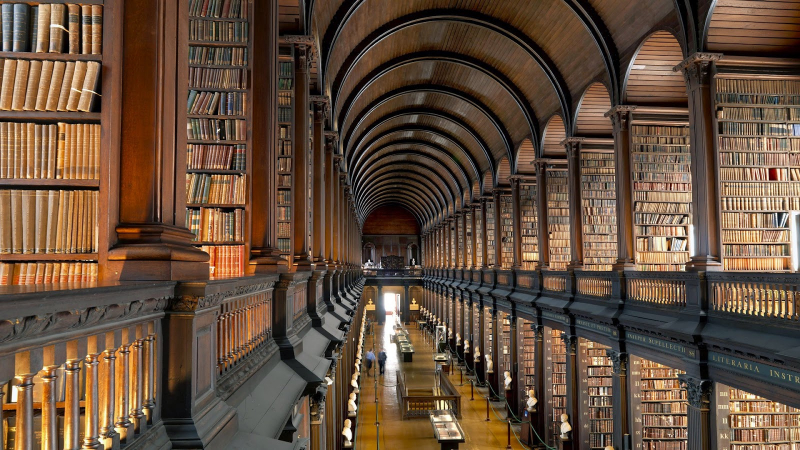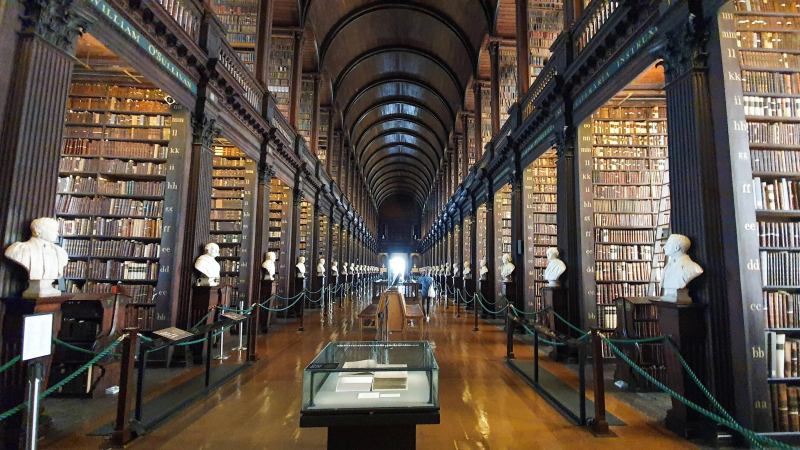Book of Kells
The Book of Kells, a 9th-century manuscript with delicate symbols and magnificent Celtic motifs, is often recognized as Ireland's most important cultural asset, as seen by the long lines to visit it at Trinity College. Leave the congested streets of Dublin behind and discover a tranquil environment where education and tourism coexist in a mainly harmonious, albeit crowded, mix. A short stroll across the historic cobblestone quadrangle leads to the Old Library, where a different page of the masterpiece is on exhibit each day in a glass case.
The 680-page medieval manuscript is a highly ornamented copy of the four Latin gospels donated to the institution in the 1660s. Its origins are disputed, with the most frequently accepted attribution being the Scottish island of Iona, despite the fact that it is named for a minor village in County Meath founded by monks. The book is made up of 340 vellums, or calfskin, folios penned by the scribes in an ornate style. Its ornate ornamentation combines Celtic, Germanic, Pictish, and Mediterranean elements. The Book of Kells easily outclasses other manuscripts in terms of vibrancy, intricacy, color, and scale. It incorporates some monkish aspects of humor as well as liturgical and eucharistic meanings. The Book of Kells is a medieval manuscript. The Book of Kells is the last beautiful historical site in Ireland.
Location: Trinity College, Dublin













